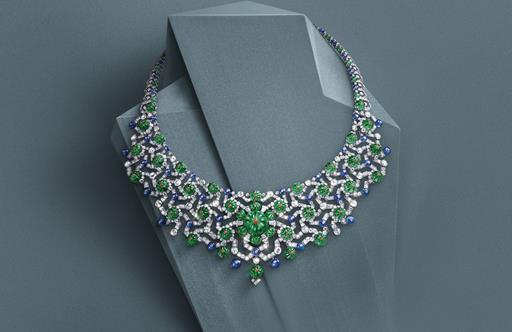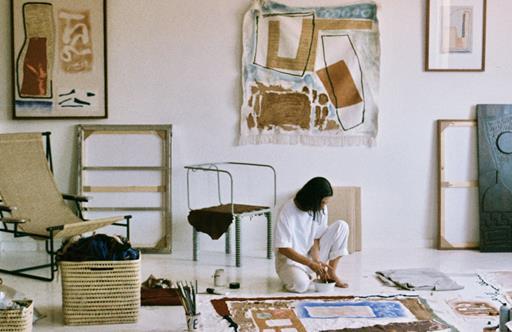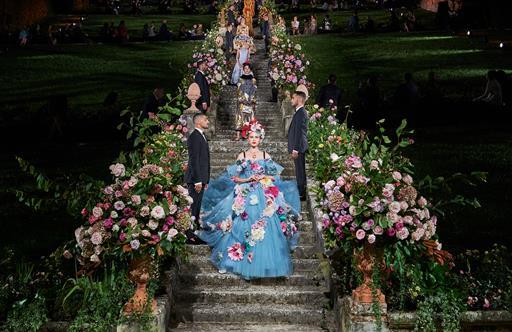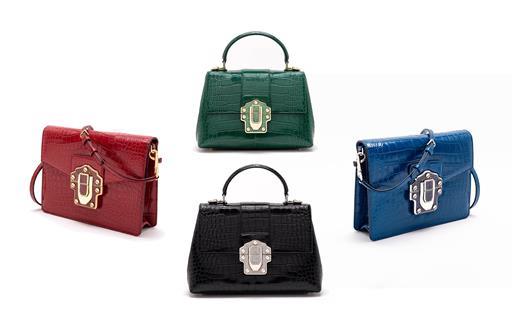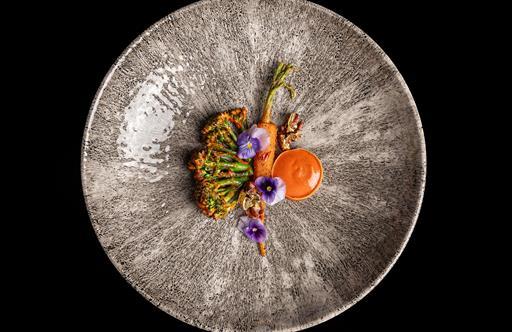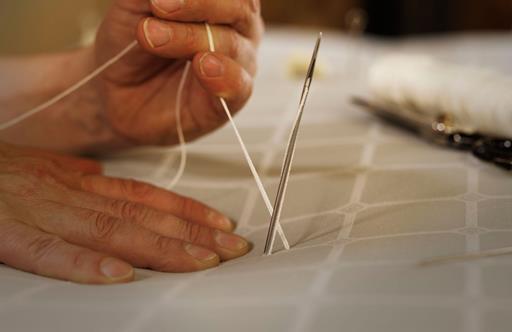The Shrinking of Art
While some numbers point to a flailing global art market, a closer look reveals the advent of a new generation of collectors – one who eschews large-scale paintings and sculptures in favour of readily portable pint-sized treasures with a more pocket-friendly price tag.
Much has been written about the fragile state of the art market. “Sotheby’s has reported an 88% plunge in its core earnings and a 25% decline in auction sales,” wrote The Financial Times last August. It hasn’t been as bad as that for all the auction houses. But its main competitors all suffered similar falls in sales. And the mega-galleries weren’t doing much better. Hauser & Wirth may have posted a turnover of £143.9m in 2023, but that was 16% below its 2022 results. Among the smaller but still significant London dealers, Sadie Coles HQ was down 18%; Lisson 33%.
They weren’t alone in feeling a chill. According to the latest Art Basel and UBS Survey of Global Collecting, prepared annually by the independent research firm Arts Economics, high-net-worth collectors – at least the 3,660 individuals across 14 markets interviewed – cut their spending by an average of $363,905 in the past year, just under a third of their usual art-buying budget. Millennials were found to have cinched their belts yet tighter.
Collectors haven’t stopped collecting, but they are spending less. As Arts Economics also reported, 70% of the fine artworks sold at auction in 2023 cost less than $5,000, accounting for just 2% of sales values. The galleries are, not surprisingly, putting on a brave face. Most of those who exhibited judged last autumn’s big art fairs a success. But looking at what sold, it’s hard to avoid a sense that it is not just the market that is contracting, but the art itself.
The consensus at New York’s Armory Show this past September was that compact works with five-figure prices were in greatest demand. Witness the Parisian gallery Templon’s sale of multiple small paintings on paper by the New York-based Senegalese artist Omar Ba for $18,000 apiece.
 Jonas Wood cashmere blanked (courtesy of the artist and Studio Voltaire, photo: Graham Pearson)
Jonas Wood cashmere blanked (courtesy of the artist and Studio Voltaire, photo: Graham Pearson)
But even at the other end of the market, small was beautiful. The stellar sale at Art Basel Paris, for example, was Louise Bourgeois’ Spider I (1995), sold by Hauser & Wirth for a sensational $20m. But put from your mind those giant arachnids beloved of collectors with sculpture parks like Paddy McKillen’s Château La Coste in Provence or Mei and Allan Warburg’s Donum Estate in Sonoma. This was wall-mounted and just a tenth of the width of the one at the Guggenheim Bilbao.
At Frieze Masters in London, Hauser & Wirth sold Public Enclosure at the Longchamp Racecourse (1865), a mini-Manet if you will, barely bigger than a MacBook, for €4.5m ($4.9m), along with an even smaller Gerhard Richter – 23.5.08 (2008), an overpainted photograph the size of a postcard that went for 145,000 Swiss francs ($169,000).
Of course, no one – bar the German AI-driven art-price calculator app Limna – values art according to its size. (Though, as founder Marek Claassen, insists, “Limna is an estimation tool, not a predictive one. And fewer than 20% of its estimates disagree with gallery quotes.”) But priced per square centimetre, that tiny 10x15cm Richter photograph compares very favourably against the giant Abstraktes Bild (599), which retains the artist’s auction record. Sold at Sotheby’s London in 2015, that painting hammered at £30.389m ($46.3m at the then-exchange rate), which works out at about $615 per square centimetre, compared with $1,127 per square centimetre for that precious little photograph. No wonder Iwan Wirth, Hauser’s president and co-founder, has declared himself sceptical of the “doom porn currently circulating in the art press and along gossip grapevines” and is “very confident in the art market’s resilience”.
Gallerists are inevitably reluctant to talk on the record about shrinkage. Shippers are another matter. “It did seem to be the case at Frieze and Art Basel Paris that sales of very large items had dropped,” says Alexander Bradford of the fine-art logistics specialist Gander & White. “There were a lot fewer of them.”
Several theories abound as to why this might be: money is tighter; consumer confidence is depressed; there’s little point in buying art if your walls are already full. (The foundation can wait!) “If you have a house of 1,000 square metres, there is only going to be space for about 15 large-format paintings,” says Michael Beck of the German gallery Beck & Eggeling International Fine Art. “And they’re so difficult to handle compared with small ones, which you can move from one wall to another. Smaller works are just easier to embrace, and not only in a physical way but in an intellectual one.”
 Roberto Longo earrings (© Carpenters Workshop)
Roberto Longo earrings (© Carpenters Workshop)
Others, like the interior designer Louise Bradley, whose client base runs from Knightsbridge to Kuwait, point to the trend of salon or gallery hangs. “We’ve noticed a growing fashion for picture walls,” adds Jennie Fisher, co-head of modern and contemporary art at Dreweatts auction house. “Our clients enjoy forming connections between works to display a narrative or [showcase] the breadth of their own taste, and invariably these lend themselves to smaller works.”
The shipper, however, attributes the trend towards smaller works to two reasons. First, says Bradford, “When economies are struggling, a lot of the UHNW clients we work with tend not to buy very loud, big things because they don’t want to be perceived as brash, to display their wealth so openly.” (It is telling that David Zwirner quickly found a buyer for Rose Wylie’s pineapple sculpture at Frieze, but not her monumental 3.66x3.04m painting.) “We noticed it in 2007-9 and again in 2013. Covid was an exception. People didn’t worry so much because they weren’t spending money on anything else.”
“It’s probably also to do with a growing awareness of sustainability,” he adds. “Big pieces aren’t as acceptable as they were because of the impact they have when they’re shipped.” Freight costs (pecuniary and carbon) are determined by volume, not value (which only impacts insurance) or weight. Bradford cites the influence of the Gallery Climate Coalition, founded in 2020 to raise awareness of the art world’s carbon footprint. Working out the emissions that shipping or air-freighting a work will generate using its online calculator can be a chastening experience.
Another advantage of small works is that they can be couriered rather than shipped or air-freighted, and carried as hand luggage, which obviates the need for “witness off-loading” and additional security, both of which incur added costs and are recommended for destinations where, says Bradford, “the people unloading might not be quite as conscientious with forklifts”. Indeed, increasingly global insecurity, and the wars, wildfires, floods and hurricanes that are suddenly forcing people to evacuate their homes, portability can be seen as a plus.
 Rashid Johnson ring (© Carpenters Workshop)
Rashid Johnson ring (© Carpenters Workshop)
This may also be fuelling the rise in jewellery sales, especially where pieces intersect with art. There were 15 jewellery-focused booths at TEFAF in Maastricht last spring, and half a dozen at PAD (Pavilion of Art and Design) in Paris and London, among them Carpenters Workshop Gallery. Best known as a dealer in weighty, often monumental sculptural furniture called “design-art” by connoisseurs, it launched a jewellery department in 2020.
“It isn’t [yet] a big part of our business, but it is an interest of mine,” says the gallery’s co-founder Loïc Le Gaillard. “The idea was to come up with something very sculptural and collectable but not that expensive.” A limited-edition titanium signet ring by Rashid Johnson, for example, will set you back €6,700; some Robert Longo tourmaline and sardonyx earrings, €28,500. “From a strategic point of view,” he continues, “It’s a way to create footfall and bring a broader [demographic] into the gallery.”
Certainly, it’s a strong market. According to research by the brand agency Matter Of Form, the global jewellery market is currently valued at more than $350bn and has a projected growth rate of 4.7% that will, reads its report, “send that number sky-high to $482bn by 2030”.
The best-known specialist in artist-designed jewellery, or wearable (and therefore super-portable) art as it’s also known, is Didier, which exhibits at TEFAF and Design Miami, for pieces by major-name modern and surrealist artists; and Elisabetta Cipriani for contemporary pieces. But blue-chip art dealers are increasingly testing this market. Hauser & Wirth has exhibited exquisite pieces by Fausto Melotti, while Gagosian – which has been selling merchandise online for more than two decades and, as an adjunct to its 20-odd gallery spaces, opened the first of its retail shops in New York in 2009 – is offering $60,000 “pill” necklaces and bracelets designed by Damien Hirst; rings by Rachel Feinstein; and a range of Man Ray-inspired pendants, chokers and torques, made by Venyx, the jeweller founded by Eugenie Niarchos.
 Anne Weyant cashmere blanket (courtesy of the artist and Studio Voltaire, photo: Graham Pearson)
Anne Weyant cashmere blanket (courtesy of the artist and Studio Voltaire, photo: Graham Pearson)
You can occasionally find jewellery, as well as inexpensive artworks on the David Zwirner-backed website Platform, a venture The New York Times described in December 2023, not without understatement, as selling “artists’ pieces you won’t find at Art Basel”. Six months later, at its summer edition in Switzerland, Art Basel launched a shop of its own, “a novel concept store showcasing bespoke lifestyle and heritage products encapsulating and celebrating the Art Basel experience.” Unlike the fair, it’s accessible to anyone.
But then, in light of the way purveyors of luxury goods feed off the art world with artist collaborations, perhaps it was only a matter of time until art dealers returned the compliment. Christian Dior may have sewn up, so to speak, the market for artist-designed handbags, having commissioned editions of its Lady Dior bag from more than 80 cleverly curated names to date, from Joël Andrianomearisoa to Michaela Yearwood-Dan, by way of Judy Chicago and Mickalene Thomas. But blue-chip galleries are capitalising on commissioning artist-licensed merchandise, too, comprising anything from a set of Cindy Sherman skateboards (£1,950 from Hauser & Wirth’s online shop) to cashmere blankets by Jonas Wood or Anna Weyant (£1,500 from House of Voltaire). Even the high-minded Austrian gallerist Thaddaeus Ropac has launched a line of “luxury gifts” in partnership with Paris-based boutique Ligne Blanche, aimed at those desirous of Gilbert & George scented candles (€160), Alex Katz porcelain plates (from €110) or Jean-Michel Basquiat espresso cups (€180 a pair). It is telling that Bonhams recruited its new CEO, Chabi Nouri, not from the art world but the Swiss watchmaker and jeweller Piaget.
And yet, it’s not as though everyone has stopped spending. Towards the end of the year, Bain & Company, in partnership with the Italian luxury goods company Altagamma, published a report predicting that “global luxury spending is expected to reach nearly €1.5tn in 2024”, admittedly a modest “estimated growth rate [of less than] 1% year over year”, but a lot of money nevertheless. It also found that the “secondhand market is gaining traction”, which may help explain the fact that luxury goods accounted for about 30% of Sotheby’s $7.9bn revenue in 2023. Handbags, too, are holding strong, in particular Hermès’ Birkin 20 Faubourg, the auction record for which stands at more than $280,000. Just for the record, it’s an unusually small Birkin, about two-thirds of the size of a regular one and just 20 centimetres wide at its base. Small, it seems, can be a selling point.
 Gilbert & George scented candles (© Ligne Blanche Paris)
Gilbert & George scented candles (© Ligne Blanche Paris)

